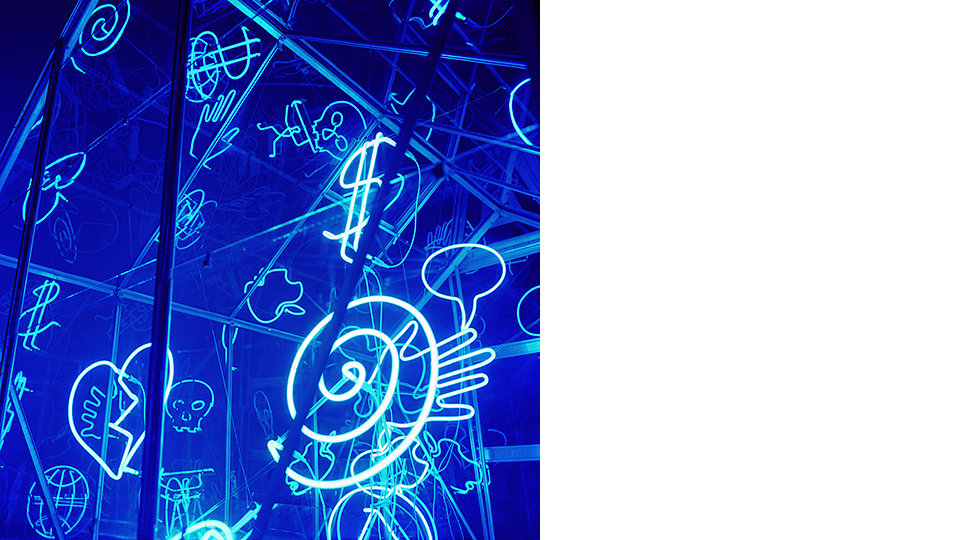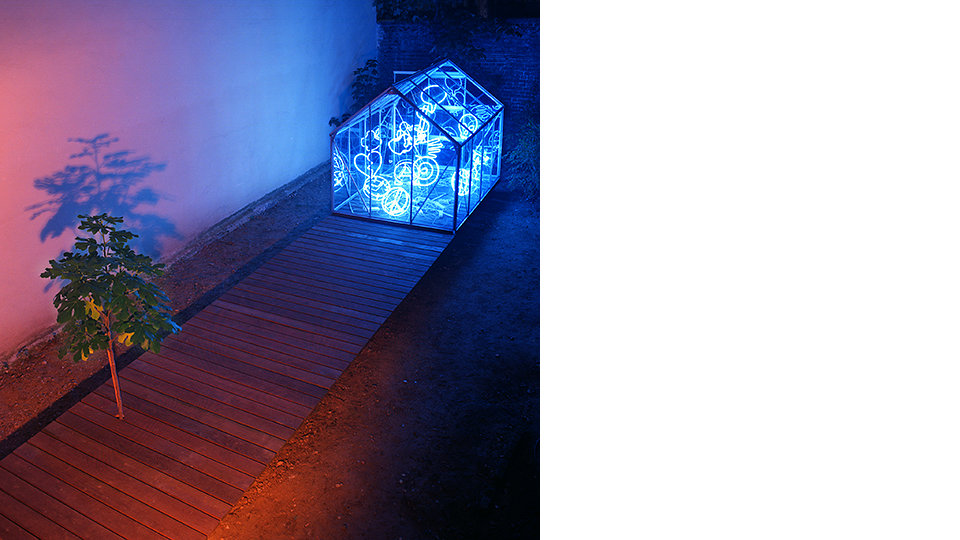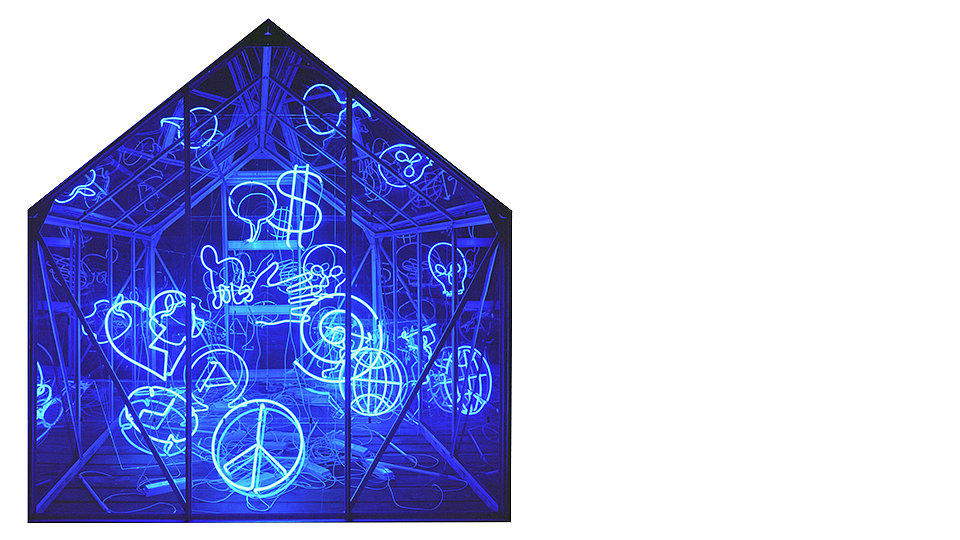Studio Hildebrand
Mag.Art. Christoph Hildebrand
+49 0163 5810594
ch@studio-hildebrand.net




Mag.Art. Christoph Hildebrand
+49 0163 5810594
ch@studio-hildebrand.net












Das Thema `rethinking: space, time and architecture` des 21.Architekturkongresses der UIA (Union Internationale des Architects) war der Ausgangspunkt für eine temporäre Neoninstallation in einem typischen Hinterhof in Berlin-Mitte.
Dort wurde auf einem Holzsteg ein gläsernes Gewächshaus errichtet und mit einem Dutzend Neonpiktogrammen gefüllt, die in ständig wechselnden Kombinationen neue Sinnzusammenhänge produzierten.
In der christlichen Mythologie beginnt unsere Zivilisation mit der Vertreibung aus dem Garten Eden. Danach startete eine Kulturgründung technischer und sozialer Art, die bis heute andauert. Die Behausung, ob Höhle, Zelt oder Haus, war dafür eine unabdingbare Notwendigkeit zum Schutz, als Ort für die Familie und Speicher für kulturelle Errungenschaften.
Der Ort für die Installation „Eden Pavillon“ ist ein typischer kleiner Berliner Hinterhof im Stadtteil Mitte. Dort findet sich auf einem als Bühne errichteten Holzsteg ein gläsernes Gewächshaus, das mit Dutzenden von Neonpiktogrammen, die allgemeine zivilisatorische Werte kartografieren, angefüllt ist. Die mittels einer digitalen Steuerung aktivierten Zeichen produzieren unablässig neue Sinnzusammenhänge.
Nach der Vertreibung von Adam und Eva aus dem Garten Eden begann eine Kulturgründung, die bis heute andauert. Die Behausung war dafür eine unabdingbare Notwendigkeit. In dem Projekt ist das Haus ein Symbol für diesen Zivilisationsprozess, und gleichzeitig ein Speicher unterschiedlichster Kulturleistungen, die auf immer neue Weise verknüpft werden können. Das auf eine gläserne Haut reduzierte Haus und die substanzlosen, sich in moduliertem Licht manifestierenden Informationen bilden das aktuelle Ende zum in der archaischen Holzplattform materialisierten Ursprung.
Stadtraum, Architektur und Kunst verdichten sich zu einem eindringlichen Bild für den Prozess, in dem die „Architekten“ aus Politik, Wirtschaft und Kultur aus alten und neuen Bausteinen die globale Zivilisation errichten.
//
The theme `rethinking: space, time and architecture` of the 21st Architecture Congress of the UIA (Union Internationale des Architects) was the starting point for a temporary neon installation in a typical backyard in Berlin-Mitte.
There, a glass greenhouse was erected on a wooden walkway and filled with a dozen neon pictograms that produced new contexts of meaning in constantly changing combinations.
In Christian mythology, our civilisation begins with the expulsion from the Garden of Eden. After that, a cultural foundation of a technical and social kind began that continues to this day. The dwelling, whether cave, tent or house, was an indispensable necessity for protection, as a place for the family and a repository for cultural achievements.
The location for the installation „Eden Pavilion“ is a typical small Berlin backyard in the Mitte district. There, on a wooden walkway erected as a stage, is a glass greenhouse filled with dozens of neon pictograms mapping general civilisational values. The signs, activated by means of a digital control system, ceaselessly produce new contexts of meaning.
After the expulsion of Adam and Eve from the Garden of Eden, a cultural foundation began that continues to this day. The dwelling was an indispensable necessity for this. In the project, the house is a symbol of this process of civilisation, and at the same time a storehouse of the most diverse cultural achievements that can be linked in ever new ways. The house reduced to a glass skin and the insubstantial information manifesting itself in modulated light form the current end to the origin materialised in the archaic wooden platform.
Urban space, architecture and art condense into a haunting image for the process in which the „architects“ from politics, business and culture build global civilisation from old and new building blocks.
T E M P O R A R Y Studio 63, Auguststraße, Berlin Venue of XXI World Congress of Architecture 13.07.-27.07.2002 + D E S I G N 12 neon signs / greenhouse 2.00 x 3.00 x 2.00m hight / digital steering / wooden platform / fig tree + S U P P O R T / C O L L A B O R A T I O N Claudius Pratsch + M E D I A 7 images © Christoph Hildebrand & + T A G S Neon / Cluster / Houses / Piktos / Urban / Temporary +
